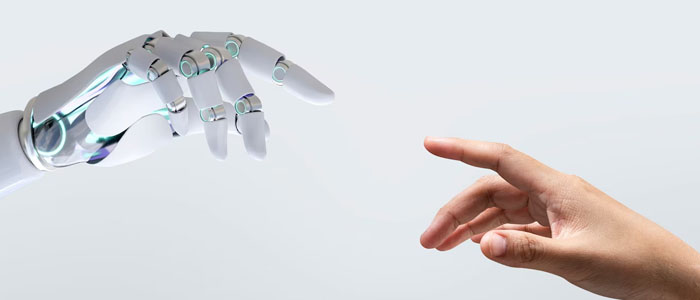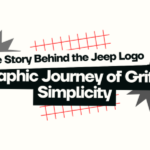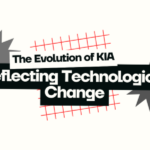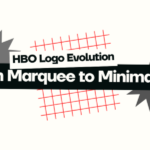We are aware that AI is rapidly evolving and has become integrated into many industries and businesses. In areas like video production and art, AI tools can quickly generate images for individuals. However, in the logo design industry, there are significant challenges associated with using AI-generated logos.
While AI is adept at swiftly creating images and layouts, there are instances where logos created purely through AI can be easily identified as such within a fraction of a second. This can create a bad impression for the owner or the business, as it lacks the individual and authentic touch that a logo design should convey to the audience.
In this short article, we will examine why AI might be perceived as a potential threat to graphic designers and why this concept may not succeed. We’ll also consider whether AI could be utilized as an advantage or should not be considered at all in the context of logo design. Let’s dive in!
How AI is Rising in Logo Designing
Once upon a time, AI was used in sci-fi stories or fiction series, but that has now become a reality. This technological leap has introduced a new era of design possibilities. For instance, AI-powered platforms can generate multiple logo concepts in seconds, providing designers with a rich pool of creative options. Beyond logo creation, AI excels in image manipulation, effortlessly removing backgrounds, enhancing colors, and resizing images.
Moreover, AI’s ability to automate repetitive tasks is a game-changer. Design elements can be generated automatically, allowing designers to focus on strategic and creative aspects. By analyzing design trends and user behavior, AI offers intelligent suggestions for layout and composition, ensuring visual appeal and user-friendliness.
While this sounds all too good to be true, and it does, there are a couple of things one should look out for before completely relying on AI for their logo designs.
Learn more: How to Create a Powerful Logo Slogan: The Do’s and Don’ts.
7 Reasons Why AI Will Not Replace Logo Designers
Here, we will examine the most important reasons AI cannot replace logos and graphic designers.
1. AI Takes it All Off Of The Internet
The first and most important factor to consider is that AI relies on existing information from the internet. This means that when it presents a logo design, it may be inspired by multiple existing logo designs. It creates something new by combining elements from existing designs, making it appear original when it may not be. This may be hard to believe because you may have seen videos, images and other content that looks completely new. This, in actuality, cannot be possible in the first place unless you, as a designer, provide it with unique information to polish.
2. Strategic Thinking
A logo is more than just a visual element; it’s a strategic tool. Designers understand how a logo fits into a broader branding strategy and can create custom designs to contribute to overall business objectives. AI, while capable of data analysis, may not fully grasp the strategic implications of custom logo design. While AI is a valuable tool for designers, it cannot replace the human touch, creativity, and strategic thinking required for exceptional logo design.
3. AI Lacks Emotional Connection
At the end of the day, AI involves programming intelligence. Therefore, one can say in simple terms that it is already programmed. Which, in fact, is true. While AI can be programmed to try its best to include an emotional touch to designs that it creates, it still will lack that human feel, no matter what. Professional logo designers understand the psychology behind shapes, colors, typography and logo design sizes. They know what designs, colors, and patterns resonate with a specific brand’s target audience. Creating logo designs that attract in an instant. This emotional and human-like connection can only be achieved through a professional logo designer.
4. Understanding Brand Essence
AI has the ability to create designs based on given data, but it cannot truly understand the essence and purpose of a brand. Logo designs represent a brand, conveying the right message to its target audience to prevent any confusion. Professional logo design agencies need to understand that simplified logo designs play a crucial role in delivering a memorable message to the audience. Unlike AI, a professional logo designer can understand the unique story behind your brand at a personal level. While AI can help identify competitor brands, it is incapable of achieving a deep understanding of your brand on a personal level.
More ideas for you: Ideas for Designing Logos for the Automotive and Car Industry.
5. Innovation
Previously, we have established that AI takes information, details, and sources from the internet since that is how it is programmed. Therefore, coming up with completely new ideas without being told to do so by the logo designers themselves would be a challenge for AI. Professional logo designers bring critical thinning and impactful strategies for your logo design to stand out from the crowd and the competitors, ensuring it is simple, memorable, and evokes a personal connection with your audience. For that reason, creative solutions can be difficult for AI to develop. For example, if you use a logo designer tool to design a “custom” design for your brand, it will take sources from a wide lake of data, samples, and other designs in order to create that design for you. In simple terms, this will not be custom-made for your brand.
6. Client Collaboration
When it comes to creating a custom logo for a client, it’s important to keep the client informed about the decisions being made. This includes discussing the design elements, the time frame, and any necessary revisions. Client interaction is crucial to understanding their expectations for the logo, allowing the creative designer to think outside the box and deliver a personalized design. Sometimes, clients may need reassurance or request changes. Having a team of collaborative logo designers ensures that clients feel confident in the process, knowing that their designs are in capable hands and not generated by a rigid, uncommunicative tool.
7. Ethical Considerations
We have already established the fact that AI lacks the human touch or emotional connection overall. This ultimately can manifest in the form of negligence towards ethical considerations. Since AI is a preprogrammed intelligence tool, it can deliver stereotypical results, causing ethical dilemmas. Some may see this as offensive imagery, which is a result of something that does not consider the evolving changes. Compared to a professional logo designer, keep these rules, terms and ethical values in mind when it comes to designing logos because this is the first impression your brand or business creates and delivers to its viewers and potential customers. AI has the strong potential to overlook these considerations, which could lead to a bad first impression of your firm.
More to know: The PlayStation Logo and its Significance.
Can AI Collaborate With Logo Designers?
While we have been discussing a list of reasons why and how AI cannot replace logo designers, let’s not completely exclude AI from this. Looking at it from a different perspective, we can see that AI can collaborate with logo designers to generate more ideas. Although the designs created by AI may be similar or repetitive, professional logo designers can incorporate their human touch to make the designs unique or draw inspiration from them.
Human designers can collaborate with AI to incorporate emotional intelligence and cultural nuances, creating an intuitive user experience. The future of design will be a symphony of humans and machines, forming a symbiotic relationship. AI will handle the heavy lifting, while humans will focus on the strategic and emotional aspects of design.
Think of it this way: AI serves as a brainstorming partner, tirelessly generating several design options. Then, the human designer steps in to contribute their creative vision and emotional intelligence. They will select, refine, and infuse the design with their human touch. This collaboration will grow in a new era of design—one that is both efficient and impactful. However, a complete logo design entirely generated through AI is not the best option for any business or firm. If the flaws aren’t noticeable now, they will be in the long run.
Informative read: Top 12 Best Logo Redesigns in 2025.
Collaborate with LogoVent for Your True Logo Design
The human touch in the world of creativity will reign supreme, no matter how advanced AI becomes or how well it is programmed to mimic the abilities of a professional logo designer. LogoVent brings your blurred logo vision into a clear and creative reality. Our seasoned logo designers know the magic behind a meaningful logo, what makes your logo stand out, and what makes your viewers curious to learn more about you and your brand or business.
We offer affordable and innovative solutions. It’s like killing two birds with one stone (not literally!). So get your custom logo design with LogoVent and establish a powerful brand identity with a logo design that acts as a shield for you.
FAQ’S
Is AI a threat or an asset to logo designers?
If used correctly, AI can be seen as more of an asset. While AI can generate, simplify, or automate several designs, logo designers can focus on strategic thinking and include that human-like emotional touch into the logo design.
What is the future of graphic design?
Graphic and logo designers are in great demand. Although AI has the potential to drive logos or generate graphics, business owners still prefer to hire professional logo designers instead of relying on AI for their logo designs.
Will AI replace logo designers in 2025?
No, AI cannot replace logo designers. While it can be a helpful tool used to a logo designer’s advantage, AI cannot do that. The human creation process will always be superior.
Will ChatGPT replace logo designers?
No, it cannot. ChatGPT is a natural language processing tool that functions as a chatbot. As an AI chatbot, it provides answers to text-based questions. If you ask it to design a logo, thinking that it will generate an actual image, you will be dissatisfied.





